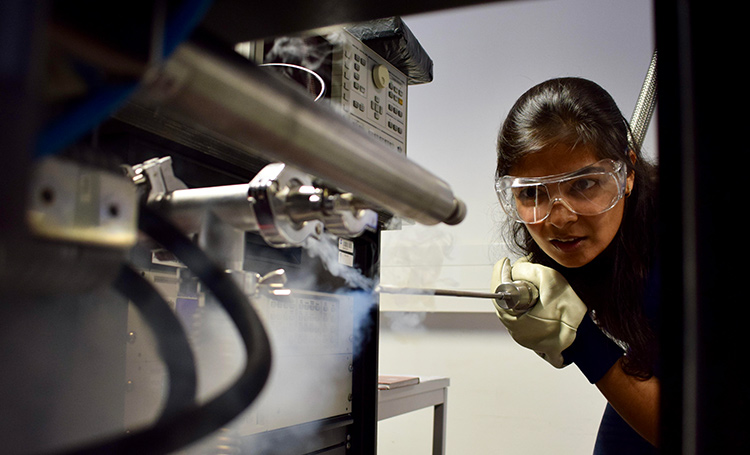Feature
2D MOFs: A New Platform for Optics?
An emerging class of 2D semiconductors, so-called metal-organic frameworks, offers intriguing potential as an active element in optical applications.
 Author Himani Arora in the materials characterization lab. [Courtesy of H. Arora]
Author Himani Arora in the materials characterization lab. [Courtesy of H. Arora]
MOFs—hybrid materials consisting of metal ions or clusters in coordination bonds with organic linkers—have long been known, and have found their way into a number of niche applications, such as the storage of gases. The recent boom in so-called 2D materials (such as graphene and transition-metal dichalcogenides), however, has accelerated work on synthesizing and characterizing crystalline and porous 2D MOFs, and has raised intriguing prospects for their use in optoelectronics and photonics. In this feature, we take a closer look at 2D MOFs, how they’re synthesized, and their potential optical applications.
…Log in or become a member to view the full text of this article.
This article may be available for purchase via the search at Optica Publishing Group.
Optica Members get the full text of Optics & Photonics News, plus a variety of other member benefits.
